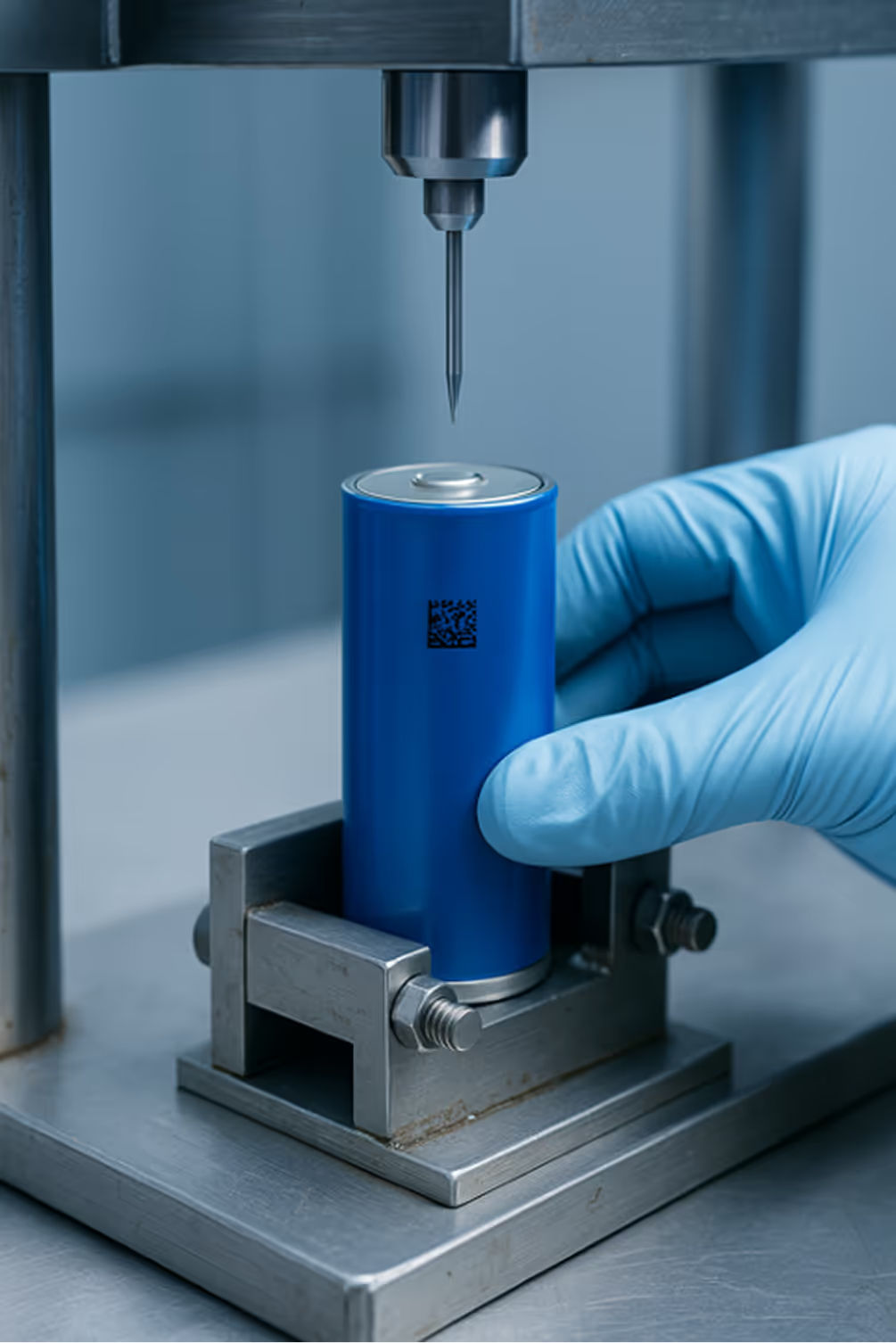Depth of discharge (DoD)
Depth of discharge (DoD) is the percentage of a battery's capacity that has been discharged relative to its total capacity.
Depth of discharge (DoD) is defined as the percentage of a battery's total capacity that has been used during a discharge cycle, serving as a critical metric for evaluating battery performance and health in various applications.
In the battery industry, professionals recognize DoD as a cornerstone parameter that directly impacts efficiency, longevity, and cost-effectiveness. Whether designing electric vehicles (EVs), grid-scale energy storage, or portable electronics, understanding and optimizing DoD is essential for maximizing return on investment and ensuring compliance with stringent standards. This article delves into the intricacies of DoD, offering advanced insights tailored for engineers, researchers, and decision-makers seeking to enhance battery systems.
Fundamentals of Depth of Discharge
To grasp DoD's significance, it's vital to explore its core principles and how they interrelate with other battery characteristics. This section breaks down the basics, providing a foundation for more complex discussions.
Definition and Calculation Methods
DoD is calculated as the ratio of discharged energy to the battery's total usable capacity, often expressed as a percentage. For example, if a lithium-ion battery with a 100 kWh capacity discharges 80 kWh, the DoD is 80%. Accurate calculation requires precise monitoring of state of charge (SoC), as DoD and SoC are inversely related—when DoD increases, SoC decreases. Advanced battery management systems (BMS) employ algorithms to track these metrics in real-time, enabling proactive adjustments in dynamic environments like electric mobility or renewable energy integration.
Relationship with Battery Cycle Life
DoD profoundly influences battery cycle life, with deeper discharges typically accelerating degradation. Research shows that operating a battery at high DoD levels, such as 80% or more, can reduce its cycle count by up to 50% compared to shallow discharges around 20-30%. This is due to increased stress on electrode materials, leading to capacity fade and impedance rise. For professionals, optimizing DoD thresholds is key to balancing performance and durability, especially in applications demanding high reliability, such as medical devices or aerospace systems.
Factors Influencing Depth of Discharge
Multiple variables affect how DoD interacts with battery behavior, from chemical composition to operational conditions. This section examines these factors to aid in risk assessment and design improvements.
Impact of Battery Chemistry
Different battery chemistries exhibit varying tolerances to DoD. For instance, lead-acid batteries may suffer from sulfation at high DoD, limiting their lifespan, whereas lithium iron phosphate (LFP) cells often handle deeper discharges better than nickel-based alternatives. Innovations in solid-state batteries promise higher DoD resilience, but trade-offs in energy density and cost must be considered. Professionals must select chemistries aligned with application-specific DoD requirements, leveraging data from accelerated aging tests to predict long-term outcomes.
Environmental and Operational Conditions
Temperature, charge-discharge rates, and load profiles significantly alter DoD effects. High temperatures can exacerbate degradation at elevated DoD levels, while rapid cycling may introduce mechanical stresses. In electric vehicles, regenerative braking systems dynamically adjust DoD to recuperate energy, necessitating robust BMS solutions. By modeling these conditions, engineers can develop mitigation strategies, such as thermal management or adaptive charging protocols, to maintain optimal DoD ranges and extend service life.
Applications in Professional Contexts
DoD plays a pivotal role in diverse industries, where its management directly affects operational efficiency and regulatory compliance. This section highlights real-world scenarios and best practices.
Electric Vehicles and Mobility
In the EV sector, DoD optimization is crucial for range anxiety reduction and battery warranty adherence. Manufacturers often set conservative DoD limits, like 70-80%, to preserve capacity over thousands of cycles. Advanced BMS integrate DoD data with vehicle-to-grid (V2G) systems, enabling smart energy distribution. For OEMs, this means lower total cost of ownership and enhanced customer satisfaction, supported by rigorous testing against standards such as UN ECE R100 or ISO 12405.
Energy Storage Systems and Grid Stability
Grid-scale batteries rely on precise DoD control to ensure reliability in peak shaving or frequency regulation. Deep discharges in these systems can lead to accelerated aging, increasing maintenance costs. By implementing predictive analytics, operators can schedule discharges based on demand forecasts, minimizing DoD-related wear. This approach is vital for integrating renewables, where fluctuating inputs require flexible storage solutions that maintain efficiency over decades.
Strategies for Optimal DoD Management
Effective DoD management involves a combination of monitoring, technology, and procedural adjustments. This section outlines actionable methods for professionals to implement in their projects.
Advanced Monitoring and Control Systems
State-of-the-art BMS utilize sensors and IoT connectivity to track DoD in real-time, triggering alerts for preventive maintenance. Machine learning algorithms analyze historical data to recommend optimal DoD setpoints, reducing human error. In industrial settings, this translates to higher uptime and compliance with safety protocols, such as those outlined in IEC 62660 for secondary batteries.
Optimization Techniques and Future Trends
Techniques like partial state of charge (PSoC) cycling and adaptive depth management help balance energy output and longevity. Emerging trends, including digital twins and AI-driven simulations, allow for virtual testing of DoD scenarios before physical deployment. Professionals can leverage these tools to innovate in areas like second-life battery applications, where repurposed cells operate at tailored DoD levels to maximize residual value.
Conclusion and Industry Implications
Mastering Depth of Discharge is indispensable for advancing battery technology, driving sustainability, and meeting evolving market demands. By adopting data-driven approaches, professionals can mitigate risks, enhance performance, and contribute to a cleaner energy future. Continuous education and collaboration are essential, as global standards and consumer expectations evolve rapidly.
PEM Motion supports battery manufacturers, component suppliers, OEMs, and EV producers in navigating complex requirements such as testing procedures, documentation, and compliance with international standards. As an international engineering and consulting partner for battery technology, PEM Motion offers key expertise in Battery Testing & Compliance, BMS Solutions, Training, and Operations Support, empowering clients to achieve excellence in DoD optimization and beyond.
Our Focus
What we do

BATTERY Compliance
We ensure your batteries meet all compliance standards for safety and performance.

OPERATIONS & TRAINING
We empower your team with comprehensive training and operational consultation for battery technology and energy storage solutions.

BMS SOLUTIONS
We offer a wide range of Li-Ion battery solutions and Battery Management Systems for various industries.












